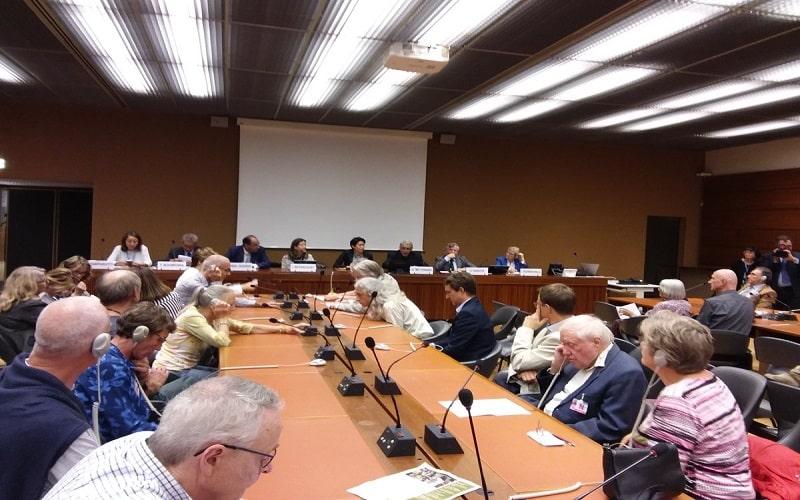30 Years after the Massacre of Political Prisoners in Iran
On Friday, September 14th, on the occasion of the 30th anniversary of this massacre, a commemorative meeting was held with the participation of a number of human rights activists at the United Nations Headquarters in Geneva.
The meeting aims at drawing the attention of the UN Special Rapporteur on Human Rights in Iran and the United Nations High Commissioner for Human Rights to the inclusion of this massacre, in the agenda of the UN Human Rights Council at its forthcoming summit, to attract the attention of the public opinion.
The speakers were Ms. Ingrid Betancourt, Gilbert Mitrán, Taher Boumedra, Lawrence Reil (member of the Swiss Federal Parliament), Dr. Vidal Coadras, the prominent Juan Garseau lawyer, and Mrs. Elizabeth Zamparotti, the secretary of ‘Hands off Cane’.
Part of the speeches of the participants in the Geneva meeting:
Amnesty International has documented 120 mass graves of 1988 Massacre and JVMI Foundation has documented 70 with exact locations.
I advise all special rapporteurs and UN officials to call for independent investigation into the 1988 Massacre.
We commemorate Asma Jahangir, previous Special Rapporteur on Iran who first addressed the 1988 Massacre and we hope that Mr. Javid Rahman will follow her path.
Khomeini’s fatwa ordered the execution of all political prisoners in Iran who were considered either “Mohareb” (those who wage war against God) or “Mortads” (Apostates) in 1988 Massacre.
Ingrid Betancourt: This is important because we are facing prisoners who had been sentenced, serving their terms, some had finished or were about to be released, who were executed in 1988 Massacre.
In 1988, in Iran prisons, prisoners were divided, beginning in July. Prisoners would face the death commission which wouldn’t ask about charges but asked about their beliefs if they renounce their affiliation to the opposition. And were executed based on it.
Executions were carried out in mass. Hundreds were executed each day. Imagine in 5 months 30.000 people were executed, men and women.
We can really see that the Iranian people are rising up in many cities that are being violently put down by the mullahs.
Things are starting to move as Iran is going under economic pressures.
Many perpetrators have actually admitted to committing the crime. Some have actually said they are proud of having participated in the massacres.
Two years ago, we published a report about audio tape by the son of late Ayatollah Montazeri. Listening to this tape you will grasp the frightening senses.
During the presidency of the so-called moderate Hassan Rouhani, over 3000 have been executed.
The Iran regime has also responded brutally to the nationwide uprising since December. More than 50 shot in streets more died under torture in prisons.
We in Europe should side with the people of Iran. Europe’s struggle in the preservation of the nuclear agreement is a disgrace.
Contrary to what Europe thinks, this is a regime that doesn’t have a future. There are no moderates in Iran regime.
The future belongs to democracy. It is essential that UNSC refers this case to international court. We look forward to the more active role of the United Nations in the inquiry regarding the 1988 Massacre.
